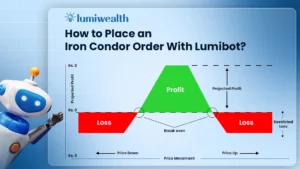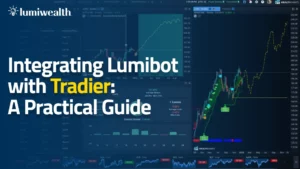
Introduction to automated trading techniques
In today’s fast-paced and ever-evolving financial markets, the need for speed and efficiency is higher than ever. As a trader, staying on top of market trends and making quick decisions is crucial for success. This is where Automated Trading Techniques come into play. Automated trading, also known as algorithmic trading, system trading, or algo trading, involves using computer programs and algorithms to execute trades on your behalf. These systems are designed to follow specific rules and criteria, allowing you to make informed decisions without the need for constant manual intervention.
In this article, we will delve deep into the world of automated trading, discussing its evolution, key components, and the numerous benefits it offers. We will also explore various algorithmic trading strategies and techniques, as well as how to choose the right algorithmic trading platform. Finally, we will discuss the challenges one may face in automated trading and the future of this innovative approach to trading. So, buckle up and join us as we revolutionize your trading game!
What is algorithmic trading?
Algorithmic trading, a subset of automated trading, is the process of using computer programs and mathematical algorithms to make trading decisions and execute trades in the financial markets. These algorithms analyze market data, identify trading opportunities, and execute trades based on predetermined rules and criteria. This type of trading system allows traders to minimize human intervention, reduce emotional biases, and increase the speed and accuracy of trade execution.
In essence, algorithmic trading systems are designed to follow a specific set of instructions, known as the trading algorithm. This algorithm is based on various factors, such as market trends, price movements, and historical data, allowing the system to make informed decisions and execute trades accordingly. By automating the trading process, traders can focus on other aspects of their investment strategy, such as research and analysis, while the algorithmic trading system takes care of the actual trading process.
The evolution of automated trading systems
The concept of automated trading is not new. In fact, it has been around since the 1970s, when electronic communication networks (ECNs) were first introduced. These systems allowed traders to trade electronically without the need for a physical exchange floor. However, the true potential of automated trading was realized in the late 1990s and early 2000s, when advances in technology and the growth of the internet made it possible for traders to develop and implement sophisticated algorithms and trading systems.
Since then, automated trading has evolved significantly, with many traders and institutions adopting these systems to enhance their trading capabilities. Today, automated trading systems are used across various asset classes, including stocks, currencies, commodities, and cryptocurrencies. These systems have also become increasingly complex, incorporating machine learning and artificial intelligence techniques to improve their decision-making capabilities and adapt to changing market conditions.
Key components of an automated trading system
An automated trading system consists of several key components, which work together to execute trades on your behalf.
- Trading Algorithm: The trading algorithm is the core of any automated trading system. It consists of a set of rules and criteria that the system uses to make trading decisions. These rules can be based on various factors, such as technical indicators, price movements, and historical data.
- Data Feed: An accurate and reliable data feed is essential for any automated trading system. The data feed provides the system with real-time market data, which it uses to analyze market conditions and make informed trading decisions.
- Trade Execution Engine: The trade execution engine is responsible for executing trades on behalf of the trader. It takes the trading signals generated by the trading algorithm and places orders with the broker or exchange, ensuring that trades are executed quickly and accurately.
- Risk Management Module: Risk management is a critical aspect of any trading strategy, and automated trading systems are no exception. The risk management module monitors the system’s performance and adjusts the trading strategy accordingly, ensuring that the system remains within the trader’s risk tolerance.
- Backtesting and Optimization: Before implementing an automated trading system, it is essential to backtest and optimize the trading algorithm. Backtesting involves running the algorithm on historical data to determine its performance and identify any potential issues. Optimization involves fine-tuning the algorithm’s parameters to improve its performance and adapt to changing market conditions.
Benefits of using automated trading techniques
There are numerous benefits to using automated trading techniques, some of which include:
- Reduced Emotional Bias: One of the primary advantages of automated trading is that it eliminates the impact of emotions on trading decisions. By following a strict set of rules and criteria, these systems ensure that trades are executed based on logic and analysis, rather than fear or greed.
- Increased Speed and Efficiency: Automated trading systems can execute trades much faster than a human trader, allowing you to capitalize on short-term market opportunities and stay ahead of the competition.
- Consistency and Discipline: By automating your trading strategy, you ensure that it is applied consistently and without deviation, helping you maintain discipline and avoid costly mistakes.
- Diversification and Risk Management: Automated trading systems allow you to diversify your trading strategies and manage risk more effectively, as they can monitor multiple markets simultaneously and adjust your positions accordingly.
- Time-Saving and Cost-Effective: By automating your trading process, you can save time and resources that would otherwise be spent on manual trade execution and monitoring. This can also help reduce trading costs, as automated systems typically require less human intervention and oversight.
Algorithmic trading strategies and techniques
There are various algorithmic trading strategies and techniques that traders can implement, depending on their investment goals and risk tolerance. Some of the most popular algorithmic trading strategies include:
- Trend-Following Strategies: These strategies involve identifying and following market trends, with the aim of capitalizing on price movements. Trend-following strategies can be based on various technical indicators, such as moving averages, MACD, and RSI.
- Arbitrage Strategies: Arbitrage strategies involve taking advantage of price discrepancies between different markets or assets. For example, a trader may use an algorithm to identify and exploit price differences between two similar stocks listed on different exchanges.
- Mean Reversion Strategies: Mean reversion strategies are based on the premise that prices will eventually revert to their historical mean or average. Traders using this strategy will look for assets that are over- or under-valued and take positions accordingly.
- News-Based Strategies: News-based strategies involve analyzing and reacting to market news and data releases. Traders using this strategy will develop algorithms that can quickly interpret and process news data, allowing them to capitalize on market-moving events.
- Machine Learning and AI-Based Strategies: These strategies involve using machine learning and artificial intelligence techniques to develop and optimize trading algorithms. By incorporating these advanced technologies, traders can create more adaptable and sophisticated trading systems that can better respond to changing market conditions.
Choosing the right algorithmic trading platform
When it comes to selecting an algorithmic trading platform, there are several factors to consider, including:
- Ease of Use: The platform should be user-friendly and intuitive, allowing you to develop, test, and implement your trading algorithms with ease.
- Customizability: A good algorithmic trading platform should offer a high degree of customizability, allowing you to tailor the system to your specific needs and preferences.
- Data Availability and Quality: The platform should provide access to accurate and reliable market data, which is essential for the success of your trading algorithms.
- Backtesting and Optimization Tools: The platform should offer robust backtesting and optimization tools, allowing you to test and refine your trading algorithms before implementing them in the live market.
- Integration with Your Broker: The algorithmic trading platform should be compatible with your chosen broker, ensuring seamless execution and management of your trades.
- Cost: Finally, consider the cost of the platform, including any subscription fees, data fees, and commissions. Make sure the platform fits within your budget and offers good value for money.
How to become a successful automated trader
Becoming a successful automated trader requires time, effort, and dedication. Here are some tips to help you on your journey:
- Educate Yourself: Learn as much as you can about algorithmic trading, including the different strategies, techniques, and tools available.
- Develop a Trading Plan: Before you start trading, develop a clear and well-defined trading plan that outlines your investment objectives, risk tolerance, and trading strategy.
- Choose the Right Tools: Select an algorithmic trading platform that meets your needs and preferences, and ensure that you have access to accurate and reliable market data.
- Test and Optimize Your Algorithms: Before implementing your trading algorithms, make sure to thoroughly backtest and optimize them to ensure they perform well in the live market.
- Manage Your Risk: Incorporate risk management techniques into your trading strategy, such as setting stop-loss orders and diversifying your portfolio.
- Monitor and Adjust Your Strategy: Regularly review and analyze your trading performance, and make any necessary adjustments to your trading strategy.
- Stay Informed: Keep up-to-date with the latest market news, trends, and developments, and be prepared to adapt your trading strategy accordingly.
Overcoming challenges in automated trading
While automated trading offers numerous benefits, it is not without its challenges. Some of the main challenges traders may face include:
- System Failures and Downtime: Automated trading systems rely on technology, and as such, they are susceptible to system failures and downtime. To mitigate this risk, ensure that your trading platform and infrastructure are robust and reliable.
- Overfitting and Curve-Fitting: Overfitting and curve-fitting are common issues in algorithmic trading, where the trading algorithm performs well in backtesting but fails to deliver the same results in the live market. To avoid this, use out-of-sample testing and cross-validation techniques when developing and optimizing your trading algorithms.
- Market Volatility: Market volatility can have a significant impact on the performance of your trading algorithms. To overcome this challenge, incorporate volatility-based indicators and adaptive strategies into your trading system.
- Regulatory Changes: Regulatory changes can have a direct impact on your trading strategy and the viability of your automated trading system. Stay informed about regulatory developments and be prepared to adapt your trading approach accordingly.
- Competition: As automated trading becomes increasingly popular, competition among traders and algorithms continues to grow. To stay ahead of the competition, continually refine and improve your trading strategies, and keep abreast of the latest trends and advances in algorithmic trading.
The future of automated trading systems
The future of automated trading systems looks promising, with advancements in technology and artificial intelligence paving the way for more sophisticated and adaptive trading algorithms. As these systems continue to evolve, traders can expect to see improved performance, reduced trading costs, and increased accessibility to algorithmic trading platforms.
Furthermore, the growing popularity of cryptocurrencies and decentralized finance (DeFi) presents new opportunities for automated trading systems, with the potential for even greater innovation and growth in the years to come.
In conclusion, automated trading techniques offer numerous benefits, including reduced emotional bias, increased speed and efficiency, and improved risk management. By learning about and incorporating these techniques into your trading strategy, you can revolutionize your trading game and enhance your overall investment performance.




